Learn about the best garlic companion plants and what you should avoid planting near garlic. Get ideas about which flowers grow well with garlic, which fruit grows well with garlic, which herbs grow well with garlic, which vegetables grow well with garlic, and which shrubs grow well with garlic. Read through the list of the best companion plants for garlic along with tips about the best time and place to plant garlic, the best fertilizer for garlic, and whether garlic needs a lot of water. There is even a simple recipe for roasted garlic included, along with a handy quick reference garlic companion plants chart. I’ve been growing and harvesting garlic for over 20 years, and it’s one of the most reliable, easy-care, best zone 8 perennial plants in our garden. If you are looking for a low-maintenance, sun-loving, productive addition to your culinary garden collection, read on to learn how simple it is to grow a plentiful crop of garlic year after year.
Table of Contents
My History with Growing Garlic
I first planted garlic as an experiment, taking some leftover store-bought garlic cloves and sticking them in the ground around the weather station we have along one edge of our vegetable garden. To be perfectly honest, I forgot they were there until they began to sprout. Ever since that time, I have always known where to go for garlic if I needed some for a recipe. The garlic cloves are in highest demand during pickle making season, and I am thankful I have a ready supply. If you are interested in growing your own garlic, here are the best garlic companion plant tips and garlic growing tips I have collected over the years.
What Does Garlic Grow Best With?
When considering the best companion plants for garlic, many factors are taken into consideration. Light, soil, and watering conditions all play a part. Many of these plants offer benefits to garlic, and garlic provides many benefits itself, most notable pest resistance. If you plant garlic once, all you have to do is divide and replant cloves each fall for a never-ending supply. Read on to learn which plants make good garlic companions and which you might want to avoid placing near your garlic bulbs.
Why is Garlic a Good Companion Plant?
Garlic is a good companion plant for several reasons:
Natural Pest Repellent: Garlic emits a strong odor that deters many pests, helping protect nearby plants from insect infestations.
Disease Suppression: Garlic contains sulfur compounds with natural antifungal and antibacterial properties. Planting garlic near susceptible crops can help suppress certain diseases.
Biodiversity: Companion planting with garlic promotes a diverse garden ecosystem. Different plants interact in ways that enhance overall soil health and create a more balanced environment.
Space Optimization: Garlic can be strategically planted among other crops, maximizing the use of garden space. Its growth habit allows for efficient use of available areas.
Beneficial Insects: Garlic attracts beneficial insects such as ladybugs and predatory wasps, which contribute to pest control in the garden.
Which Flowers Grow Well with Garlic?
There are many flowers which complement garlic plants. Here are a few excellent choices, both annuals and perennials.
Which Annual Flowers Grow Well with Garlic?
Even though you have to have to plant annuals every year, Incorporating these annual flowers into your garlic garden not only adds visual appeal but also contributes to a healthier, more resilient ecosystem.
Marigolds: Marigolds are known for repelling nematodes in the soil, which can benefit garlic. Their bright flowers also attract beneficial insects that prey on harmful pests.
Calendula: Calendula flowers attract pollinators like bees, enhancing garlic’s pollination. Additionally, calendula can deter certain pests with its strong scent.
Alyssum: Alyssum serves as a ground cover that can help suppress weeds around garlic. Its small flowers attract beneficial insects, creating a more balanced ecosystem.
Nasturtiums: Nasturtiums repel pests like aphids and whiteflies, providing protection to garlic. They can also serve as a trap crop, drawing pests away from the garlic.
Which Perennial Flowers Grow Well with Garlic?
Incorporating perennial flowers with garlic adds beauty to your garden and also promotes a balanced and sustainable environment.
Lavender: Lavender’s aromatic qualities can help deter pests that may affect garlic. It also attracts pollinators, benefiting garlic’s pollination process.
Chamomile: Chamomile’s antibacterial properties can contribute to the overall health of garlic. Its low-growing habit also acts as a ground cover, suppressing weeds around garlic.
Yarrow: Yarrow attracts beneficial insects and can improve the soil structure, creating a favorable environment for garlic. Its feathery foliage complements the growth habit of garlic.
Echinacea (Coneflowers): Echinacea attracts pollinators and provides a diverse floral landscape that supports a healthy garden ecosystem. Its robust growth can enhance the overall biodiversity.
Which Fruits Grow Well with Garlic?
These fruit and garlic pairings create a symbiotic relationship, with each crop offering protection and support to the other.
Blueberries: Blueberries and garlic share similar soil preferences, and garlic’s pest-deterring properties can benefit blueberry bushes. The combination helps maintain a healthy growing environment for both.
Strawberries: Garlic can help deter pests that affect strawberries, while the strong scent of garlic may repel certain insects harmful to strawberries. This combination supports a healthier environment for both crops.
Apple Trees: Garlic may help prevent apple scab, a common fungal disease in apple trees. Additionally, the repellent properties of garlic can discourage pests that could harm apple trees.
Peach Trees: Garlic’s pest-deterring qualities can benefit peach trees, and the combination helps create a more resilient orchard by reducing the risk of certain pests and diseases.
Grapes: Garlic can assist in deterring pests that may affect grapevines, contributing to a healthier grape crop. The strong aroma of garlic may also help repel certain insects.
Which Herbs Grow Well with Garlic?
These herb companions not only offer pest protection but also contribute to a diverse and flavorful garden.
Rosemary: Rosemary helps deter pests that may affect garlic, and both plants thrive in well-drained soil. The aromatic oils in rosemary can also enhance the flavor of garlic.
Thyme: Thyme acts as a natural pest repellent, and its low-growing habit can provide ground cover that suppresses weeds around garlic. Both thyme and garlic prefer well-drained soil.
Sage: Sage can help repel pests harmful to garlic, and its aromatic properties may contribute to deterring certain insects. The two herbs complement each other in flavor when used together.
Which Shrubs Grow Well with Garlic?
The companion shrubs listed below not only offer practical benefits but also contribute to a diverse and aesthetically pleasing garden landscape.
Roses: Garlic helps repel aphids and other pests that can affect roses. In return, roses can offer shade to garlic and create a visually appealing garden space.
Currant Bushes: Garlic can help deter pests that may harm currant bushes, and the combination supports a more resilient and thriving garden ecosystem.
Boxwood: Boxwood shrubs can serve as a windbreak for garlic, protecting it from strong winds. Garlic’s pest-deterring qualities can contribute to the overall health of boxwood shrubs.
Which Vegetables Grow Well with Garlic?
These garlic and vegetable companion plantings create a harmonious environment, promoting healthier growth and deterring common pests.
Tomatoes: Garlic helps protect tomatoes from pests like aphids, and tomatoes repel certain insects harmful to garlic. The combination can improve the overall health of both crops.
Lettuce: Lettuce provides shade to garlic, helping to regulate soil temperature. Additionally, garlic’s strong scent may deter pests that affect lettuce.
Carrots: Carrots and garlic benefit each other by repelling pests that can harm one another. The combination also maximizes efficient use of garden space.
Peppers: Garlic can help protect peppers from aphids and mites. The pungent odor of garlic may act as a natural repellent for pests attracted to peppers.
What Should You Not Plant with Garlic?
There are a few plants you should avoid planting near garlic for a variety of reasons. Avoiding the combinations listed below helps prevent competition for resources and reduces the risk of shared pests and diseases, promoting healthier crops overall.
Beans: Beans and garlic can hinder each other’s growth as they have conflicting needs. Beans prefer nitrogen-rich soil, while garlic doesn’t thrive in overly fertile conditions.
Peas: Similar to beans, peas also prefer nitrogen-rich soil, which may compete with garlic. The two plants can negatively impact each other’s development.
Potatoes: Both garlic and potatoes are susceptible to similar pests and diseases. Planting them together increases the risk of shared issues like fungal infections and certain pests.
Onions: While garlic and onions are from the same Allium family, planting them together can lead to competition for nutrients. It’s better to rotate these crops to avoid nutrient depletion.
Cabbage Family (Broccoli, Cauliflower, Cabbage): Garlic can inhibit the growth of plants in the cabbage family, and vice versa. They release compounds that may interfere with each other’s development.
Quick Garlic Companion Plant Reference Chart
| Best Garlic Companion Plants | |
| Garlic Companion Plants: Flowers | Garlic Companion Plants: Fruit |
| Annuals | Apple trees |
| Alyssum | Blueberries |
| Calendula | Grapes |
| Marigolds | Peach trees |
| Nasturtiums | Strawberries |
| Perennials | Garlic Companion Plants: Vegetables |
| Chamomile | Carrots |
| Echinacea | Lettuce |
| Lavender | Peppers |
| Yarrow | Tomatoes |
| Garlic Companion Plants: Herbs | Worst Garlic Companion Plants |
| Rosemary | Beans |
| Sage | Broccoli |
| Thyme | Cabbage |
| Cauliflower | |
| Garlic Companion Plants: Shrubs | Onions |
| Boxwood | Peas |
| Currant bushes | |
| Roses | |
Common Questions About Planting and Caring for Garlic
Where should garlic be planted in the garden?
Plant garlic in well-drained soil with good sunlight exposure. Choose a location with loose, fertile soil, and ensure it receives at least six hours of sunlight daily. Plant garlic cloves about 2 inches deep and 4-6 inches apart, in rows spaced around 12 inches apart. Adequate spacing allows for proper growth and airflow, reducing the risk of diseases. Additionally, avoid areas where water tends to pool, as garlic prefers well-drained soil to prevent rot. In my garden, I have garlic planted around the strawberries and I am considering planting it around the apple trees in our orchard. Here is a photo of some garlic scapes in my garden covered by snow.
What animals does garlic repel?
Garlic is known to repel various animals due to its strong odor and natural compounds. Some of the animals it may deter include:
Deer: Garlic emits a pungent scent that deer find unpleasant, making it an effective deterrent for them. It is one of my favorite deer-resistant plants.
Rabbits: The strong smell of garlic can help keep rabbits away from plants, as they are sensitive to strong odors.
Certain Insects: Garlic is known for repelling certain insects, including aphids, spider mites, and cabbage loopers, among others.
What makes garlic grow faster?
To promote faster growth of garlic, consider the following factors:
Well-Drained Soil: Garlic prefers well-drained soil to prevent waterlogging, which can lead to rot. Loose, friable soil allows for better root development.
Adequate Sunlight: Ensure garlic receives at least six hours of sunlight daily. Adequate sunlight encourages photosynthesis and overall plant vigor.
Proper Planting Depth: Plant garlic cloves about 2 inches deep. Planting at the correct depth allows for optimal root establishment and helps protect against extreme weather conditions.
Appropriate Spacing: Plant garlic cloves 4-6 inches apart in rows spaced around 12 inches apart. Proper spacing provides each bulb with enough room to develop.
Regular Watering: Keep the soil consistently moist, especially during the growing season. However, avoid waterlogged conditions.
Balanced Fertilization: Provide a balanced fertilizer to ensure garlic has the necessary nutrients for growth. Avoid excessive nitrogen, as it may lead to lush foliage at the expense of bulb development.
Why do you soak garlic before planting?
Should you soak garlic before planting? It is frequently recommended that garlic should be soaked before planting, Just separate the cloves and soak in clean water for 12 to 24 hours before planting in well-prepared soal. Soaking garlic cloves before planting serves several purposes:
Stimulates Sprouting: Soaking garlic helps break dormancy and stimulates sprouting. This can lead to quicker and more uniform germination when planted.
Softens Outer Layers: Soaking softens the outer layers of the garlic cloves, making it easier for the emerging shoots to penetrate the soil.
Enhances Root Development: The soaking process can encourage the development of roots. This is particularly beneficial for establishing a strong root system early in the growing process.
Prevents Fungal Diseases: Soaking garlic in a solution that includes fungicides or natural antifungal agents helps reduce the risk of soil-borne diseases, promoting a healthier start for the plant.
What should I add to my soil before planting garlic?
Before planting garlic, enrich your soil with the following amendments:
Compost: Incorporate well-rotted compost to improve soil structure, fertility, and water retention. Compost provides essential organic matter for garlic growth.
Aged Manure: Aged manure, such as well-rotted cow or horse manure, adds nutrients to the soil. Ensure the manure is well-aged to prevent burning the garlic roots.
Bone Meal or Phosphorus Source: Garlic benefits from phosphorus for root development and bulb formation. Adding bone meal or another phosphorus source can support these crucial stages.
Wood Ash or Lime (if needed): Garlic prefers slightly acidic to neutral soil. If your soil is too acidic, consider adding wood ash or lime to adjust the pH.
Organic Fertilizer: A balanced organic fertilizer with a moderate amount of nitrogen can provide the necessary nutrients for garlic growth. Avoid excessive nitrogen, which may result in lush foliage at the expense of bulb development.
Do I peel garlic before planting?
When planting garlic, it’s generally recommended to leave the papery skin on the individual cloves. Plant the entire garlic clove, including the outer layers. The skin acts as a protective layer, helping the garlic clove retain moisture and preventing potential damage during planting.
Separate the cloves from the bulb just before planting, but keep the skins intact. Plant each clove with the pointed end facing up and the flat end down. The skin will naturally decompose as the garlic begins to sprout and grow.
Does garlic like full sun or shade?
Garlic prefers full sun for optimal growth. Planting garlic in a location that receives at least six hours of direct sunlight daily is ideal. Adequate sunlight is crucial for the process of photosynthesis, which is essential for the development of healthy garlic plants and bulbs.
While garlic can tolerate some partial shade, it may result in slower growth and smaller bulbs. To encourage robust growth and maximize bulb development, it’s recommended to plant garlic in a sunny location with well-drained soil.
Can you leave garlic in the ground for 2 years?
It’s not common practice to leave garlic in the ground for two years. Garlic is typically planted annually, and the bulbs are harvested after a single growing season. Leaving garlic in the ground for an extended period may result in the bulbs splitting, deteriorating, or becoming susceptible to diseases.
For best results, harvest garlic bulbs when the tops begin to yellow and fall over, usually in late spring or early summer, depending on the variety. After harvesting, cure the bulbs by drying them in a well-ventilated, shaded area for a few weeks. Once cured, store the garlic in a cool, dry place. Planting fresh cloves each year ensures a consistent and healthy garlic crop.
On a side note, I have left garlic in the ground for longer than a year when I didn‘t harvest the entire garlic crop. The cloves were still usable, but smaller after 2 years.
What is the best fertilizer for garlic?
For garlic, a balanced fertilizer with moderate levels of nitrogen, phosphorus, and potassium is recommended. Consider using an organic fertilizer to provide essential nutrients while promoting soil health. Here are some options:
Compost: Well-rotted compost is an excellent organic option. It not only provides essential nutrients but also improves soil structure and water retention.
Manure: Aged manure, such as well-rotted cow or horse manure, is rich in nutrients. Ensure that the manure is well-aged to avoid burning the garlic roots.
Bone Meal: Bone meal is a good source of phosphorus, which supports root development and bulb formation in garlic.
Organic All-Purpose Fertilizer: Choose an organic, all-purpose fertilizer with a balanced NPK (nitrogen, phosphorus, potassium) ratio. This can provide a well-rounded nutrient profile for garlic.
How much water does garlic need?
Garlic prefers consistent moisture but is susceptible to waterlogging. Here are general guidelines for watering garlic:
Establishment Phase: Keep the soil consistently moist (a watering wand helps) during the initial stages of growth, especially when the garlic is developing roots and shoots. Watering every 3-5 days, depending on weather conditions, is a good starting point.
Bulb Formation Phase: As the garlic bulbs begin to form, reduce the frequency of watering but ensure the soil doesn’t dry out completely. Allow the top few inches of soil to dry between watering. This helps prevent issues like rot and encourages bulb development.
Late Spring to Harvest: In the weeks leading up to harvest (late spring to early summer), reduce watering to allow the soil to dry out slightly. This helps with the curing process and enhances the storage quality of the harvested garlic.
When is the best time to plant garlic?
As with many bulbs, the best time to plant garlic is typically in the fall, a few weeks before the ground freezes. This allows the garlic cloves to establish roots before winter and results in healthier plants the following spring. Planting times may vary based on your location and local climate conditions, but in many regions, planting garlic in late September to November is ideal. Planting in the fall provides the following benefits:
Cold Stratification: Garlic requires a period of cold to break dormancy and stimulate sprouting. Planting in the fall ensures the cloves experience winter chill, promoting robust growth.
Root Development: Fall planting allows garlic to develop a strong root system before the onset of winter, providing a head start for spring growth.
Optimal Bulb Formation: Garlic needs a period of vernalization (exposure to cold temperatures) to produce well-formed bulbs. Fall-planted garlic has an extended period for this process.
Ways to Use Garlic
In addition to being an effective pest repellant (not just for vampires, hee hee), garlic is used in many recipes, such as my favorite quick dill pickles. One little gadget that makes garlic easy to use in recipes is a a premium garlic press that will help you mince garlic with ease. If you aren‘t sure what to do with an abundance of garlic, here is a simple recipe for roasted garlic that can be used in a variety of ways. Roasting garlic brings out its natural sweetness and adds a rich, mellow flavor to various dishes.
Simple Oven Roasted Garlic Recipe
Ingredients:
1 whole head of garlic
Olive oil
Salt and pepper
Instructions:
Preheat your oven to 400°F (200°C).
Peel away the loose, outer layers of the garlic bulb, leaving the cloves still connected.
Trim the top of the garlic head to expose the cloves.
Place the garlic head on a piece of aluminum foil.
Drizzle olive oil over the exposed cloves, ensuring they are well-coated. Sprinkle with a pinch of salt and pepper.
Wrap the garlic in the foil, creating a sealed packet.
Bake in the preheated oven for about 30-40 minutes, or until the cloves are soft and golden brown.
Allow the roasted garlic to cool slightly before handling. Squeeze the cloves out of their skins and use them in recipes, spread on bread, or enjoy as a flavorful addition to dishes.
Need More Planting Ideas?
Check out the tips for the best companion plants for eggplant to learn what to grow with those beauties. If you like the idea of companion planting, you might be interested in reading about the best companion plants for pumpkins, lavender, asparagus, sunflowers, rhubarb, blueberries, raspberries, or rosemary. Get tips for growing stunning dahlias. Are you a beginning gardener? Try planting some foolproof, easy-care perennials, or learning about the best companion plants for columbine. There are so many exciting plants to grow!
Keep Track of Your Garden with a Journal Logbook
To keep track of your planting ideas, goals, and plans, you can use a printable free garden journal logbook. Choose the pages you want to print and customize them as you wish to record monthly, weekly, and daily garden tasks, lists, weather, and planting arrangements. There are also grid pages for easily designing the layout of your vegetable garden, flower garden, or landscape. Print it out and put it into a notebook you can take with you to the garden (that’s what I do). It’s nice to have all of your garden information in one place.
Free Online Garden Planner Layout Template
Now that you know which are the best companion plants for garlic, you might need a way to plan your garden layout. Whether you are planting vegetables, flowers, or herbs near your hydrangea plant, this online garden planner can help you visualize your design and bring it to life. With garden tasks that need your attention, this is one way to save time.
It’s fully customizable when you make your own copy and includes two editable chart pages for noting planting specifications.
Get my free online garden layout planner template!
Organize Your Garden Tasks with a Free Garden Planner Notebook
As a result of needing to keep track of garden tasks throughout the year, I decided to begin a garden planner notebook. It has a page for each month, along with notes pages. If a garden planner notebook seems like a good idea to you, good news! You can get it here!
Get the garden notebook!
Have a wonderful week, and may all of your garlic-growing endeavors meet with success!
Lisa Mitchell is a wife, mom, and school librarian who likes to grow fruit, vegetables, and flowers on her family’s small Pacific Northwest farm. To learn more about what this website has to offer gardeners, click on over to the Garden page.
Like what you read here? Please give it a share!
Want more great garden, food, or travel ideas? Follow FluxingWell on Pinterest, Facebook, Instagram, and X for the latest posts, tips, and inspiration.

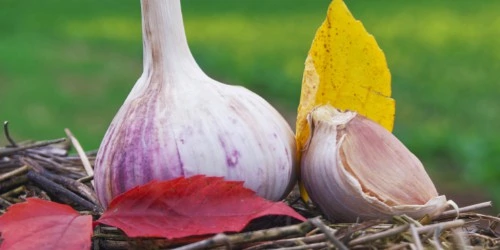
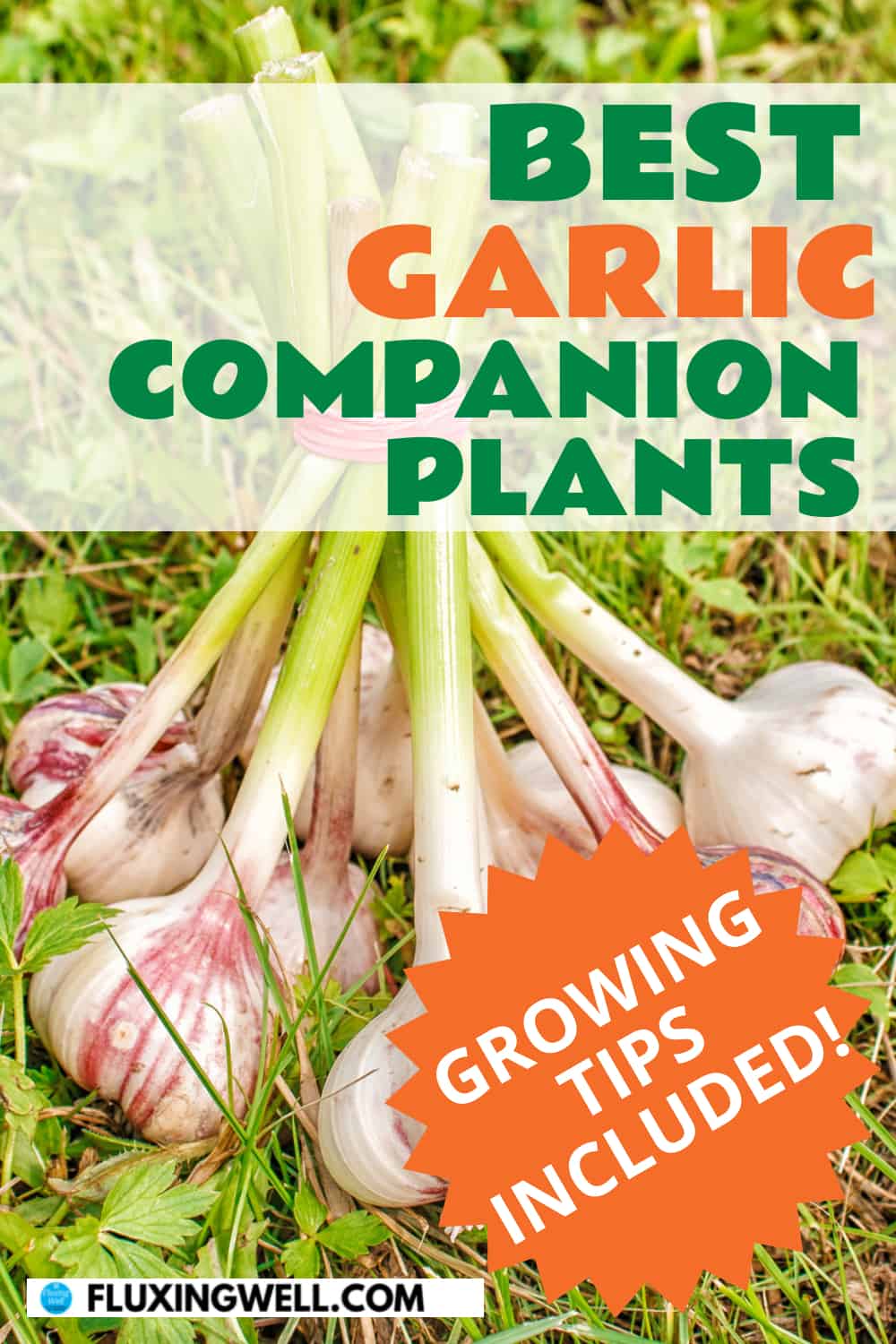
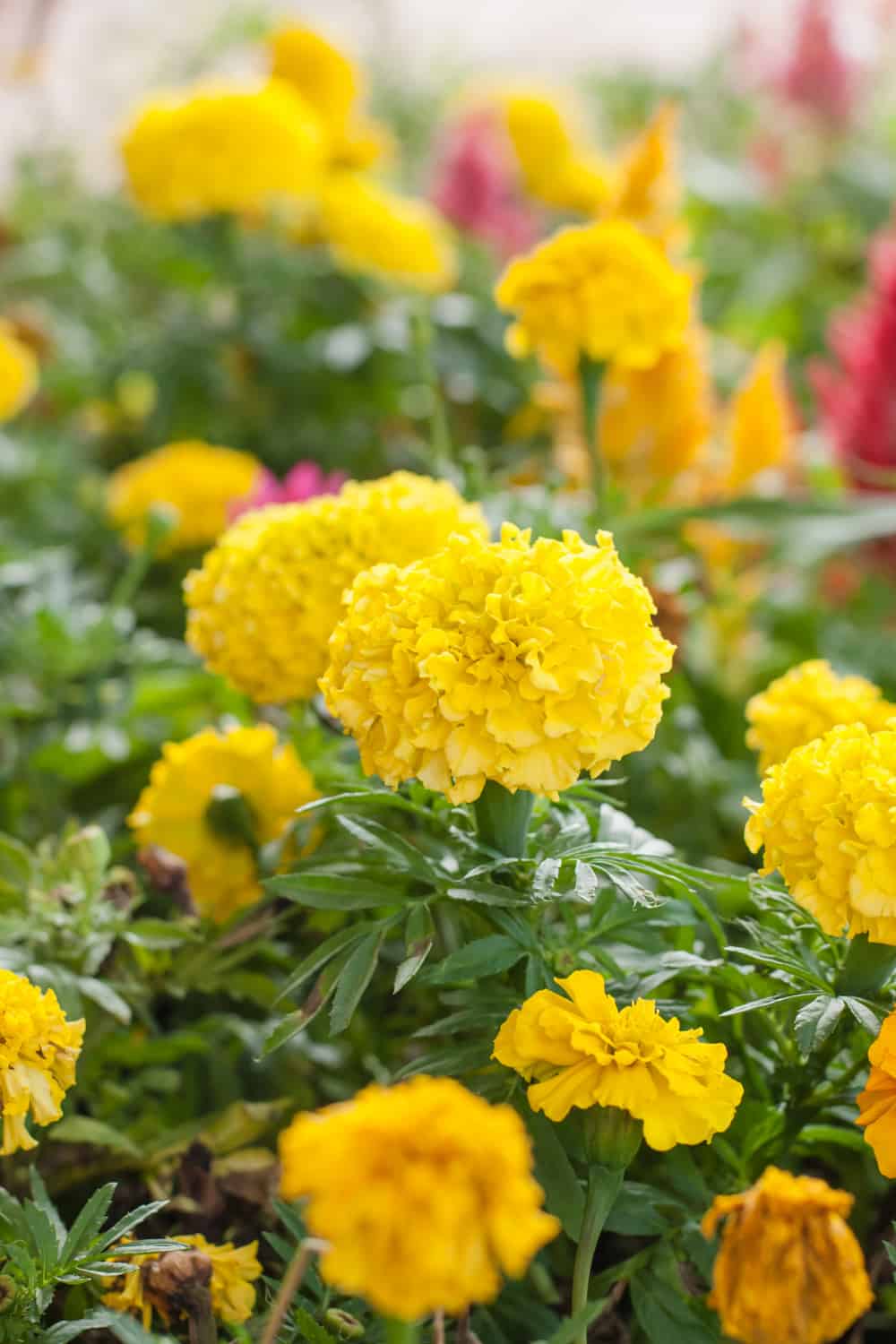
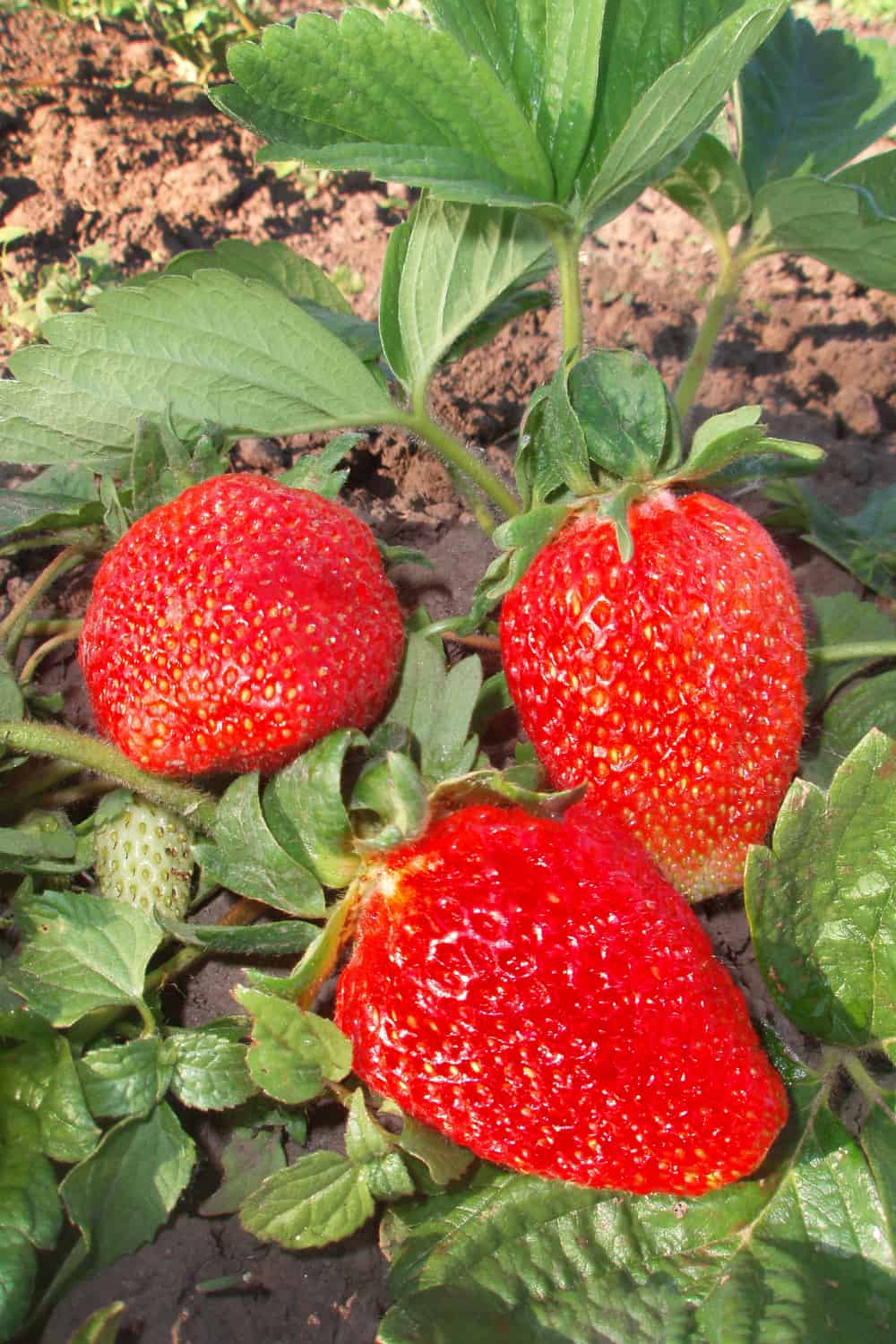
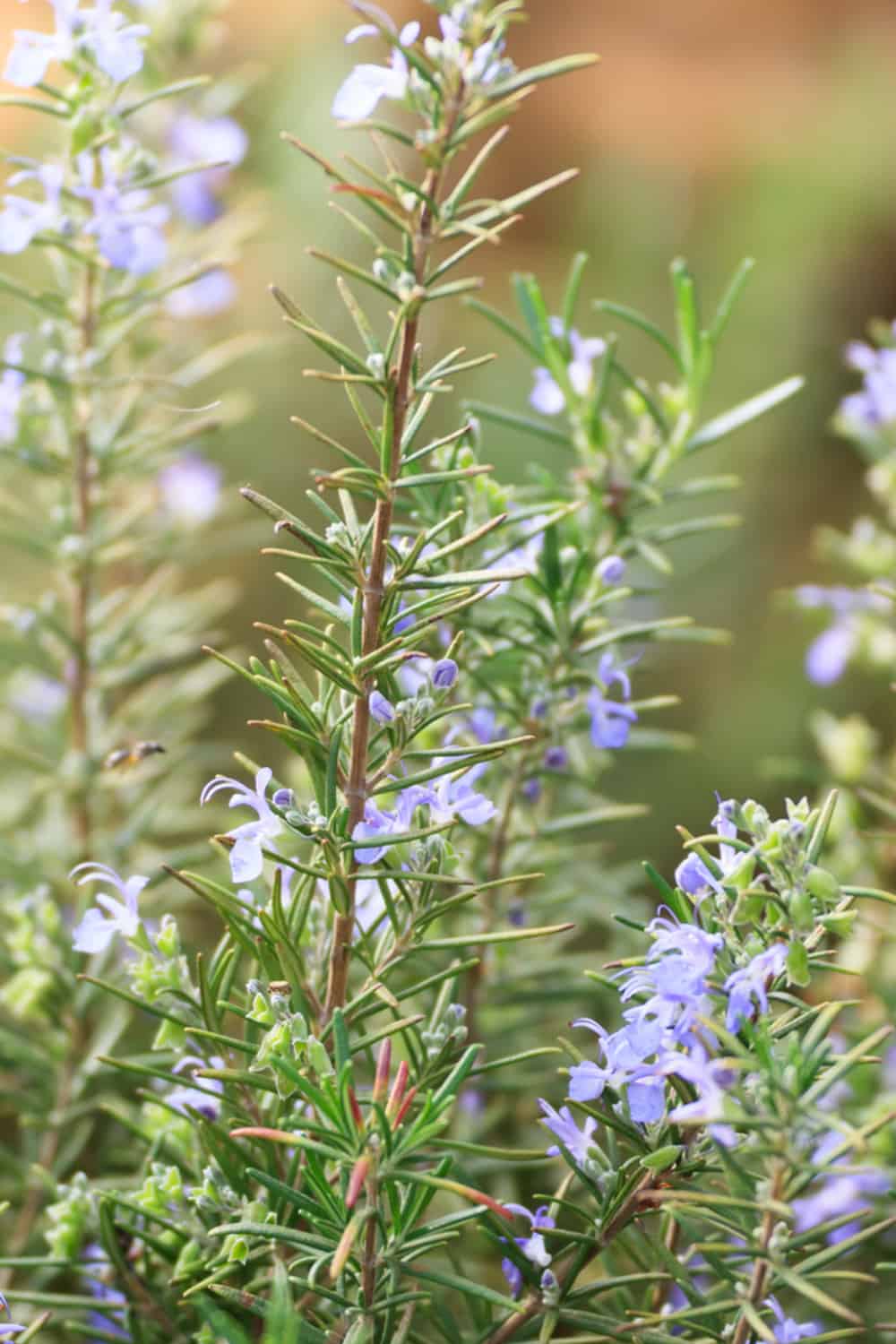
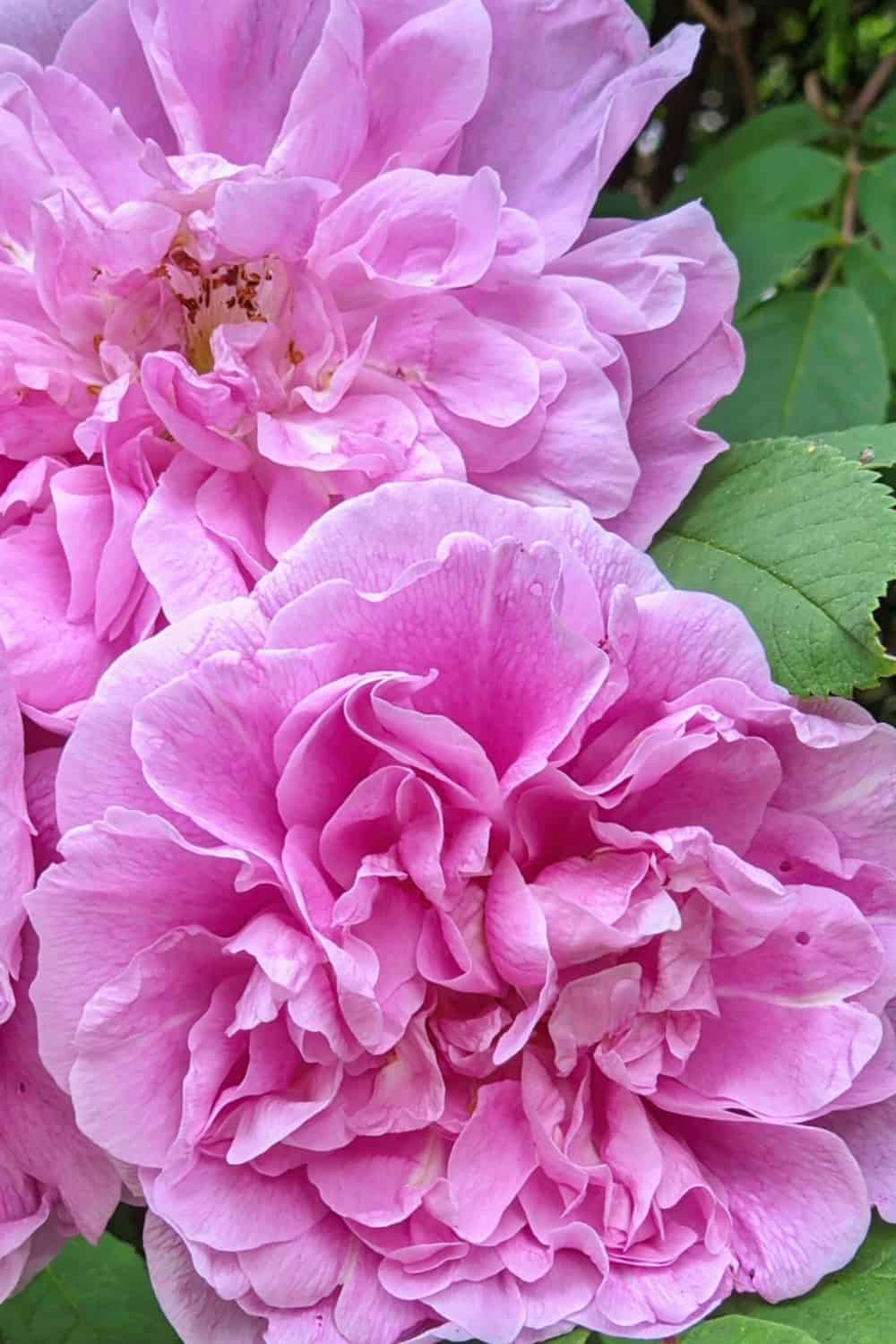
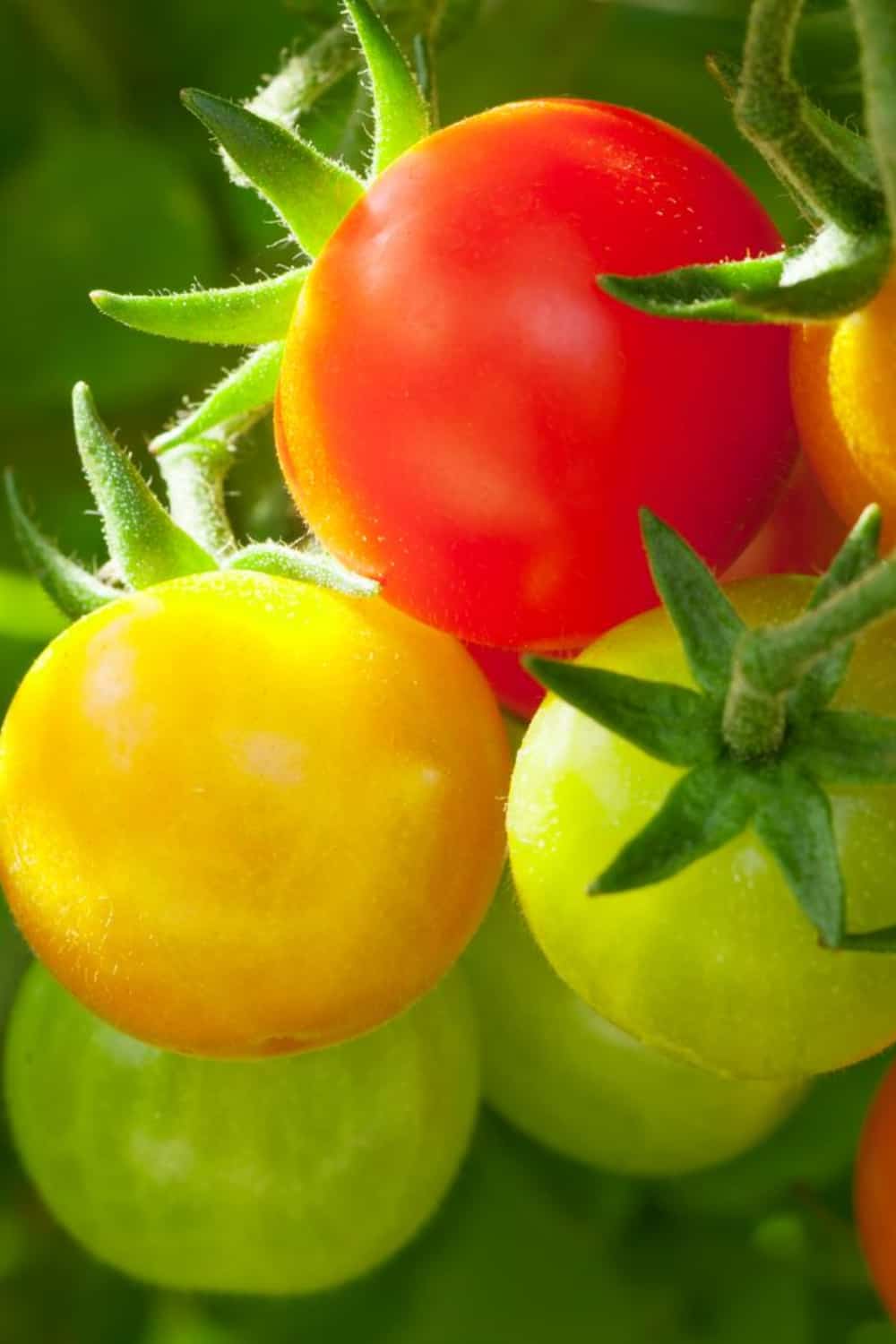
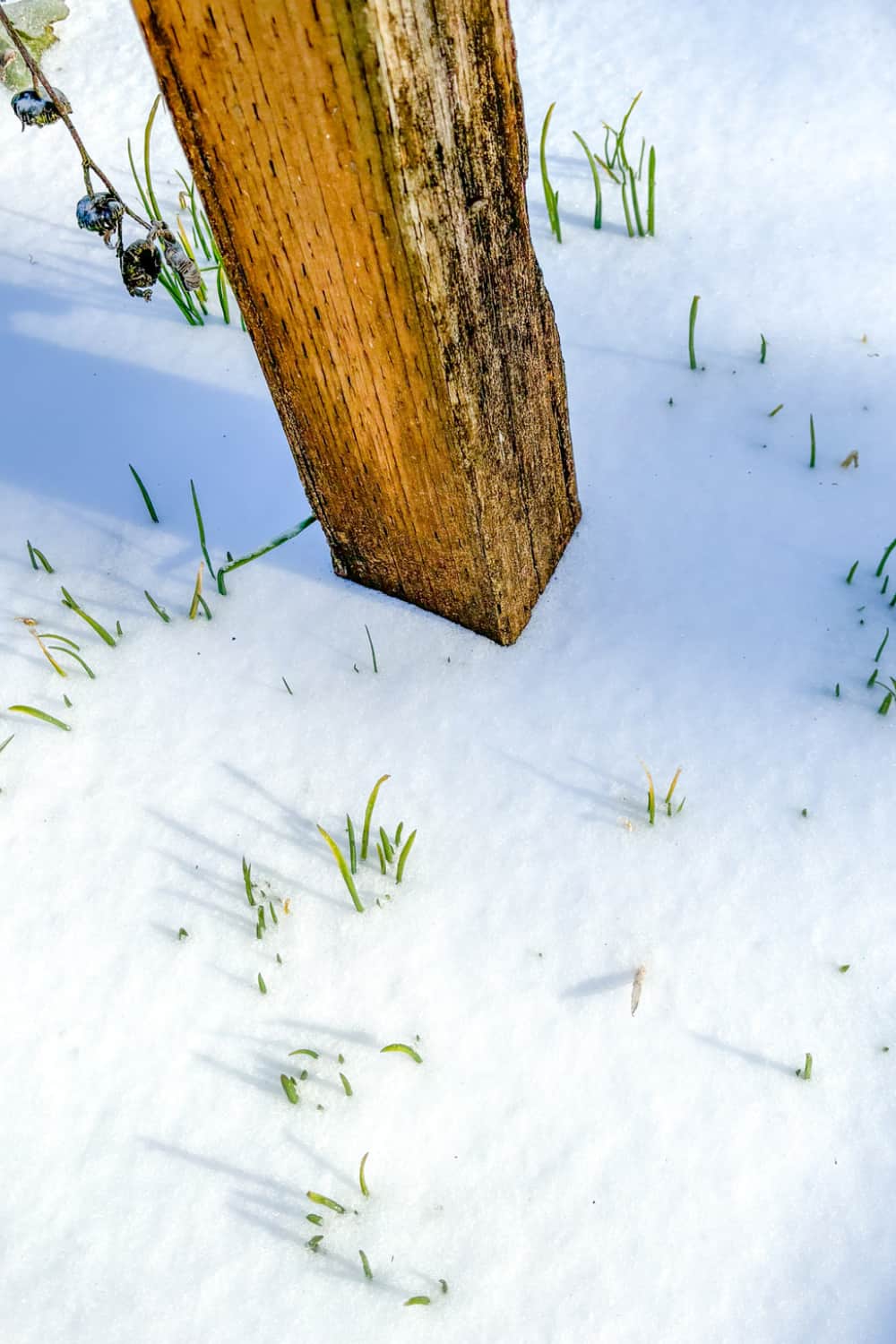
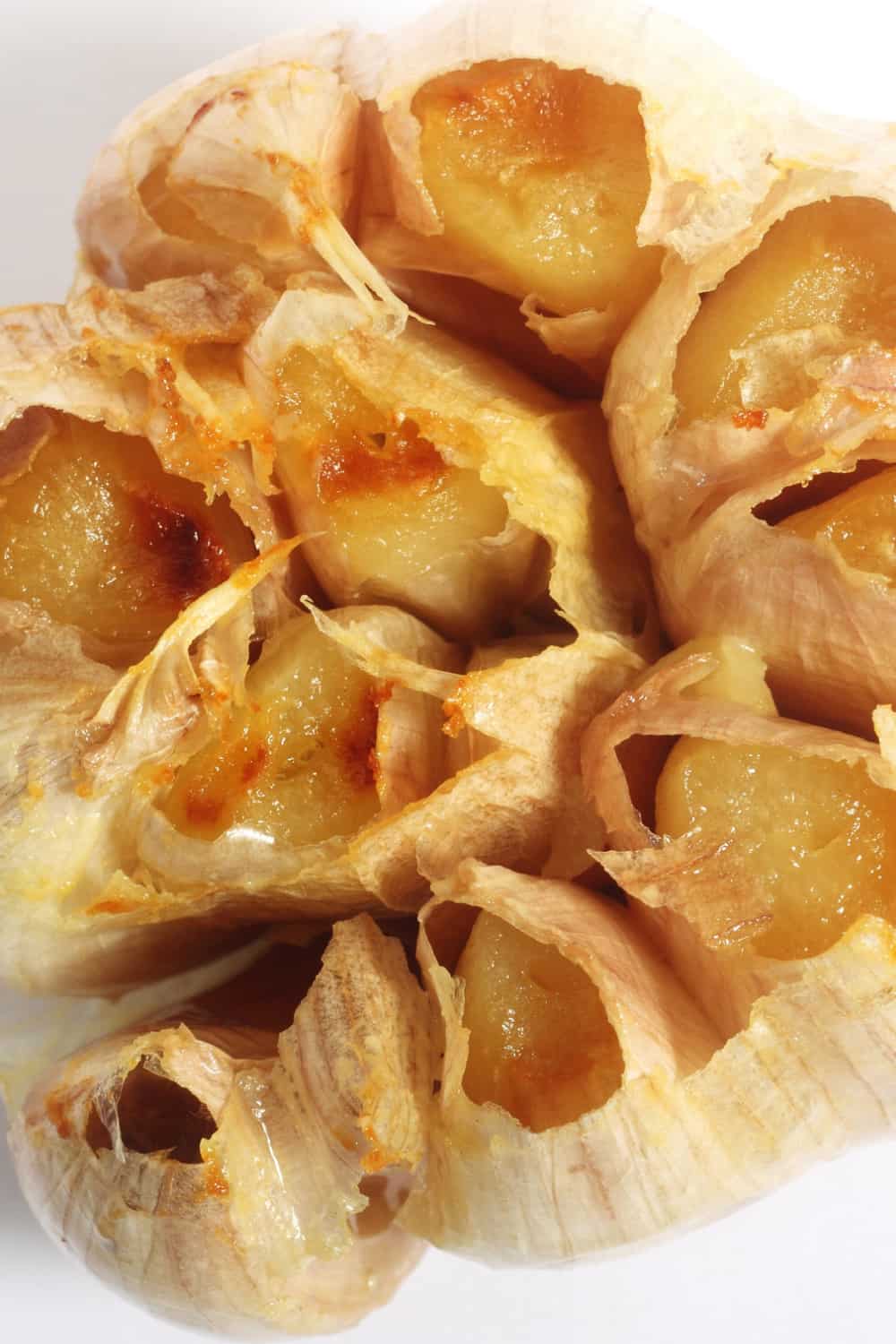
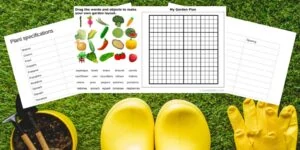


This is such a great resource for the best 23 garlic companion plants, and which to avoid. I’m always searching for a natural deer and rabbit repellent – this is perfect!
Great! I need all the help I can get to repel deer and rabbits. I am grateful for garlic!
I have never tried planting garlic. Thanks for this advice!
You are most welcome. Garlic is super easy to grow. I encourage you to try it!
Thank you for all of the tips about companion planting with garlic. I appreciate the garlic growing tips and recipe as well. I’m looking forward to a bountiful garlic harvest!
Garlic is one of the easiest things to grow in my vegetable garden. To your garlic-growing success!